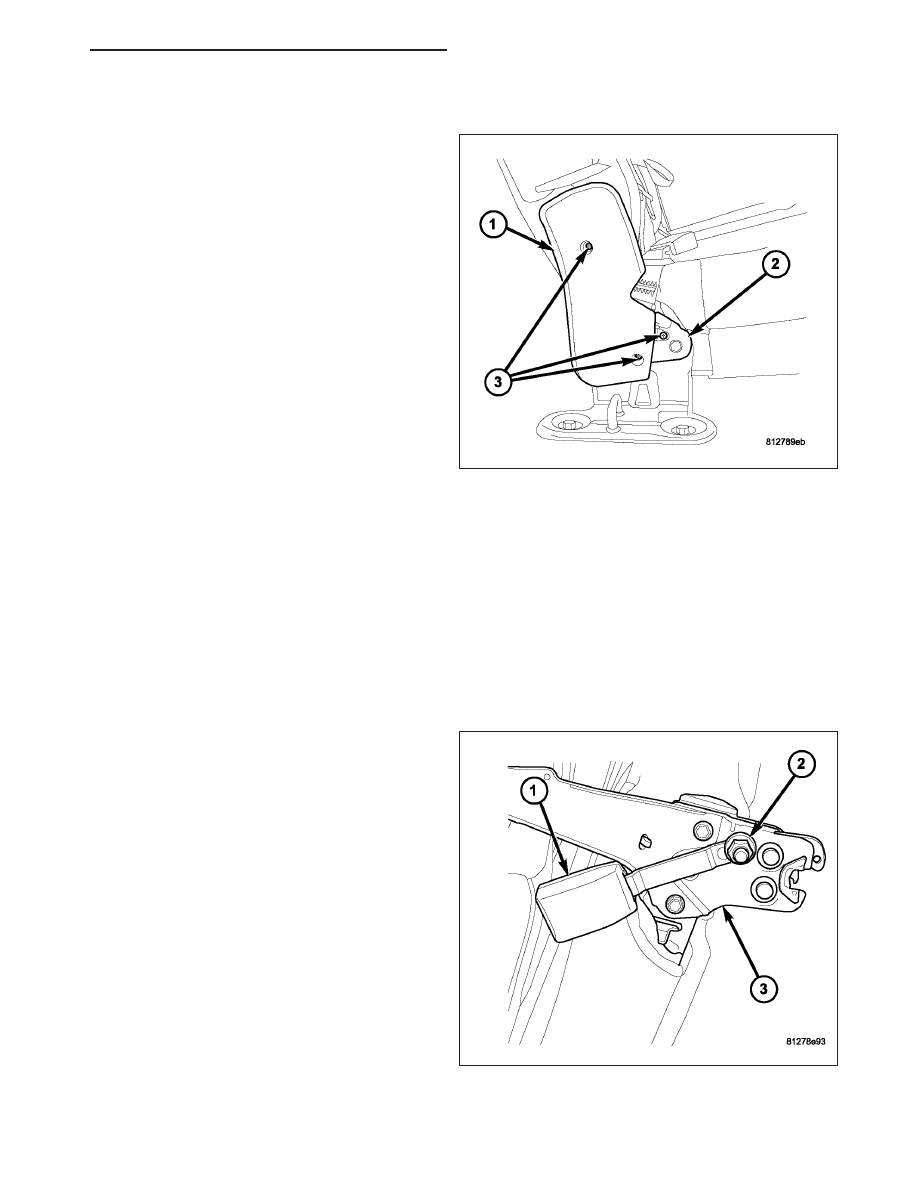Dodge Durango (HB). Manual - part 560

(32 ft. lbs.).
3. Position the center seat back right hinge bracket
cover (1) onto the bracket (2).
4. Install and tighten the three screws (3) that secure
the cover to the bracket. Tighten the screws to 2
N·m (20 in. lbs.).
5. Unfold and restore the right outboard second row
seat to its upright position.
SECOND ROW - OUTBOARD
WARNING: To avoid personal injury or death, during and following any seat belt or child restraint anchor
service, carefully inspect all seat belts, buckles, mounting hardware, retractors, tether straps, and anchors
for proper installation, operation, or damage. Replace any belt that is cut, frayed, or torn. Straighten any
belt that is twisted. Tighten any loose fasteners. Replace any belt that has a damaged or inoperative buckle
or retractor. Replace any belt that has a bent or damaged latch plate or anchor plate. Replace any child
restraint anchor or the unit to which the anchor is integral that has been bent or damaged. Never attempt to
repair a seat belt or child restraint component. Always replace damaged or faulty seat belt and child
restraint components with the correct, new and unused replacement parts listed in the DaimlerChrysler
Mopar Parts Catalog.
1. Position the second row outboard seat belt buckle
anchor (1) to the seat latch bracket (3). Be certain
the anti-rotation tab on the anchor is engaged in
the clearance notch of the bracket.
2. Install and tighten the nut (2) that secures the
anchor to the bracket. Tighten the nut to 43 N·m
(32 ft. lbs.).
HB
RESTRAINTS - SERVICE INFORMATION
8O - 509